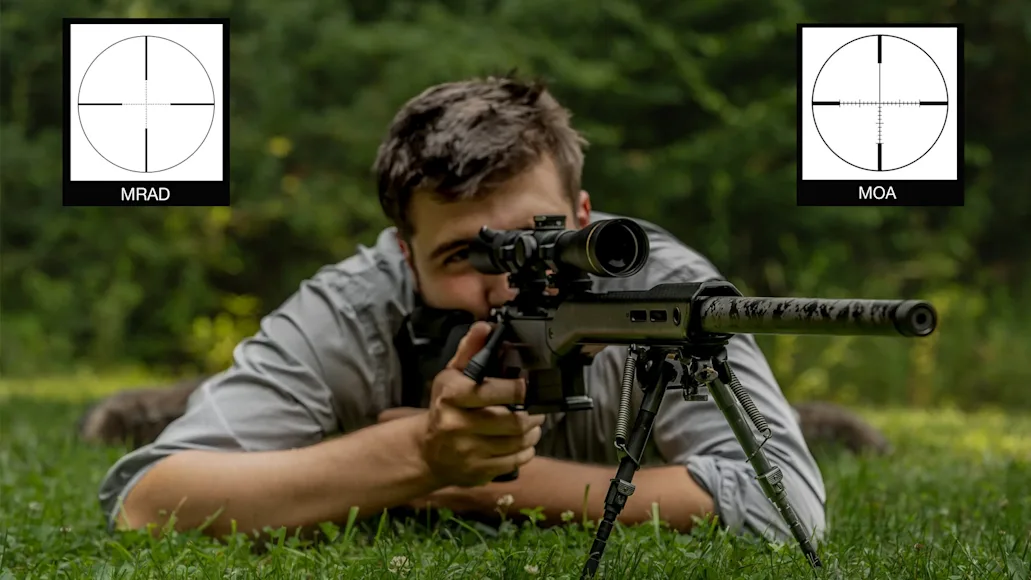_We may earn revenue from the products available on this page and participate in affiliate programs. Learn more ›
_
The moment a bullet leaves a rifle barrel, it’s dropping. To compensate for that drop and get bullets where they need to go, long-range shooters use one of two units of measure: MRAD or MOA. Both are considered angular units of measure, meaning simply that they are used to measure angles. When used correctly, MRAD or MOA units allow you to accurately predict where your shot will hit downrange, compensate for a miss by correctly adjusting your rifle scope, and estimate the distance to a target. But which unit of measurement is right for you and your shooting rig? Here’s everything you need to know about MRAD vs. MOA to make the right choice.
MRAD vs. MOA: The Basics
.embed-container { position: relative; padding-bottom: 56.25%; height: 0; overflow: hidden; max-width: 100%; } .embed-container iframe, .embed-container object, .embed-container embed { position: absolute; top: 0; left: 0; width: 100%; height: 100%; }
See https://www.youtube.com/embed/EWHR8HibjhAon YouTube
Scopes don’t adjust in inches or centimeters. Instead, they adjust in angular values, either MRAD or MOA. These values tell a shooter how to point—or angle—a rifle barrel to shoot a bullet where they want it to go. In the most basic terms, you angle a rifle barrel upward to shoot farther and side-to-side to compensate for how the wind influences a bullet’s flight. The degree to which you need to angle the barrel for a particular shot can be measured in milliradians (MRAD or MILS) or minutes of angle (MOA). Through ballistic calculations, you can figure out exactly how many milliradians or minutes of angle you need to shift for a particular shot.
When optics manufacturers list a scope as MOA or MRAD (MILS)
, they’re talking about reticle designs and turrets. Many of the same model long-range rifle scopes come set up for MRAD or MOA—meaning the reticle will have hash marks laid out for each unit of measure, and the turrets will turn in MOA or MRAD increments.
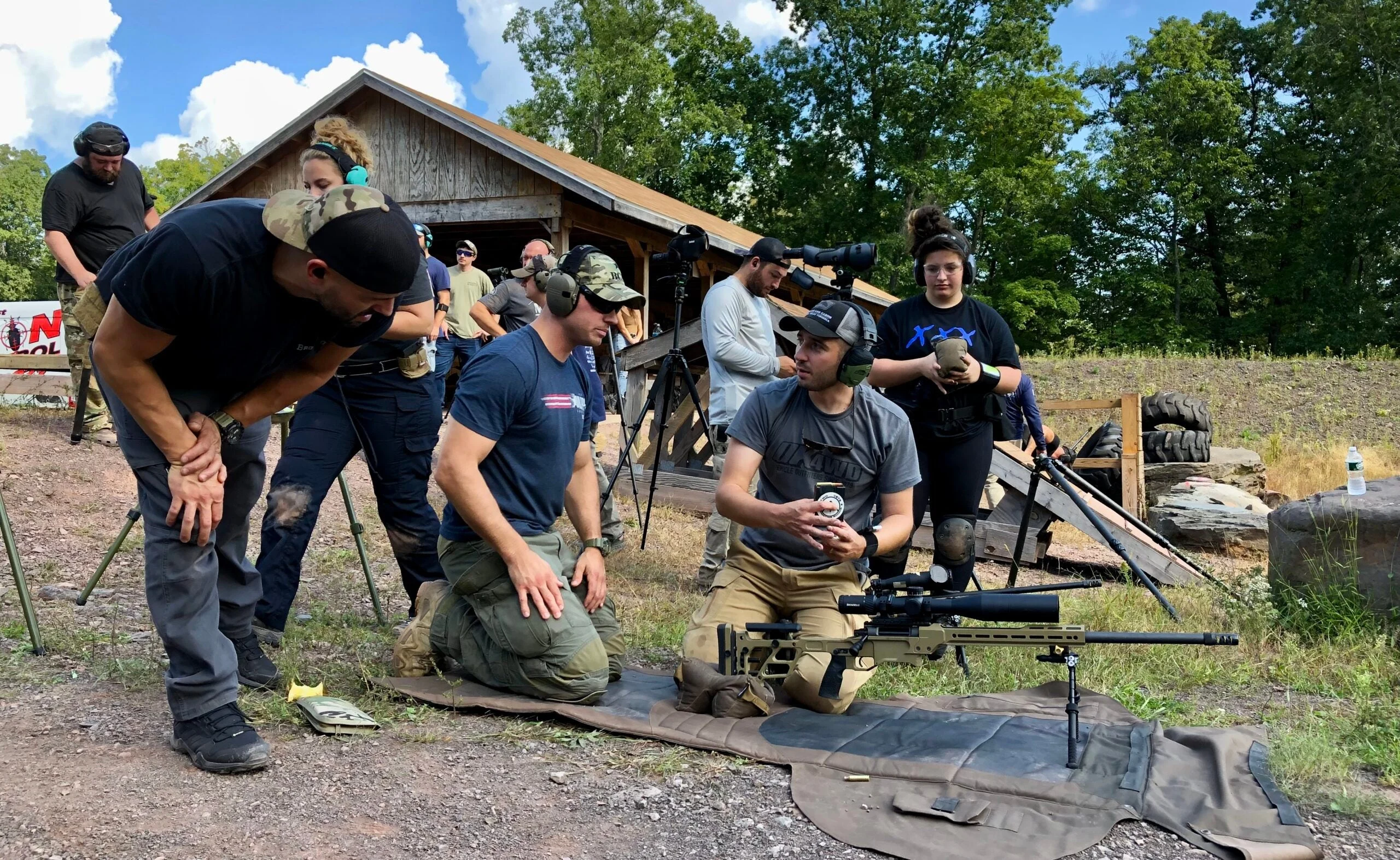
If you’re working with other shooters or a spotter, it helps if everyone is using the same units of measure. Matthew Every
There is basically no practical difference between MRAD vs MOA—one is not better or more scientific than the other. The most important thing when it comes to rifle scopes is that your reticle matches the adjustment on your turrets. If you have an MOA reticle, you want turrets that adjust in MOA and the same goes for MRAD. The same can be said for a shooter working with a spotter—otherwise, you’ll have to convert MRAD to MOA every time you need to make a correction to your shot. To accurately measure with an MRAD or MOA optic, you’ll want to have a reticle in the first focal plane, so that the measurements in your reticle will remain constant no matter what magnification you’re on.
What is MRAD?
:.embed-container { position: relative; padding-bottom: 56.25%; height: 0; overflow: hidden; max-width: 100%; } .embed-container iframe, .embed-container object, .embed-container embed { position: absolute; top: 0; left: 0; width: 100%; height: 100%; }
See https://www.youtube.com/embed/S5AGsHSIsVoon YouTube
When it comes to MRAD or milliradians, it helps to know what a radian is. One radian is an angular unit of measure that can be applied to a circle. Take a measurement from the center of a circle to the outside edge (this is called the radius). Then, take the length of the radius and wrap it around the outside edge of the circle. Mark the point where it ends and extend another line to the center of the circle. This should give you a pizza slice, and the angle at which your pizza has been sliced equals one radian. The prefix “milli” means 1,000, so 1 milliradian is the angle between two 1,000ths of one radian. (Don’t worry. You don’t actually need to understand this to shoot well.)
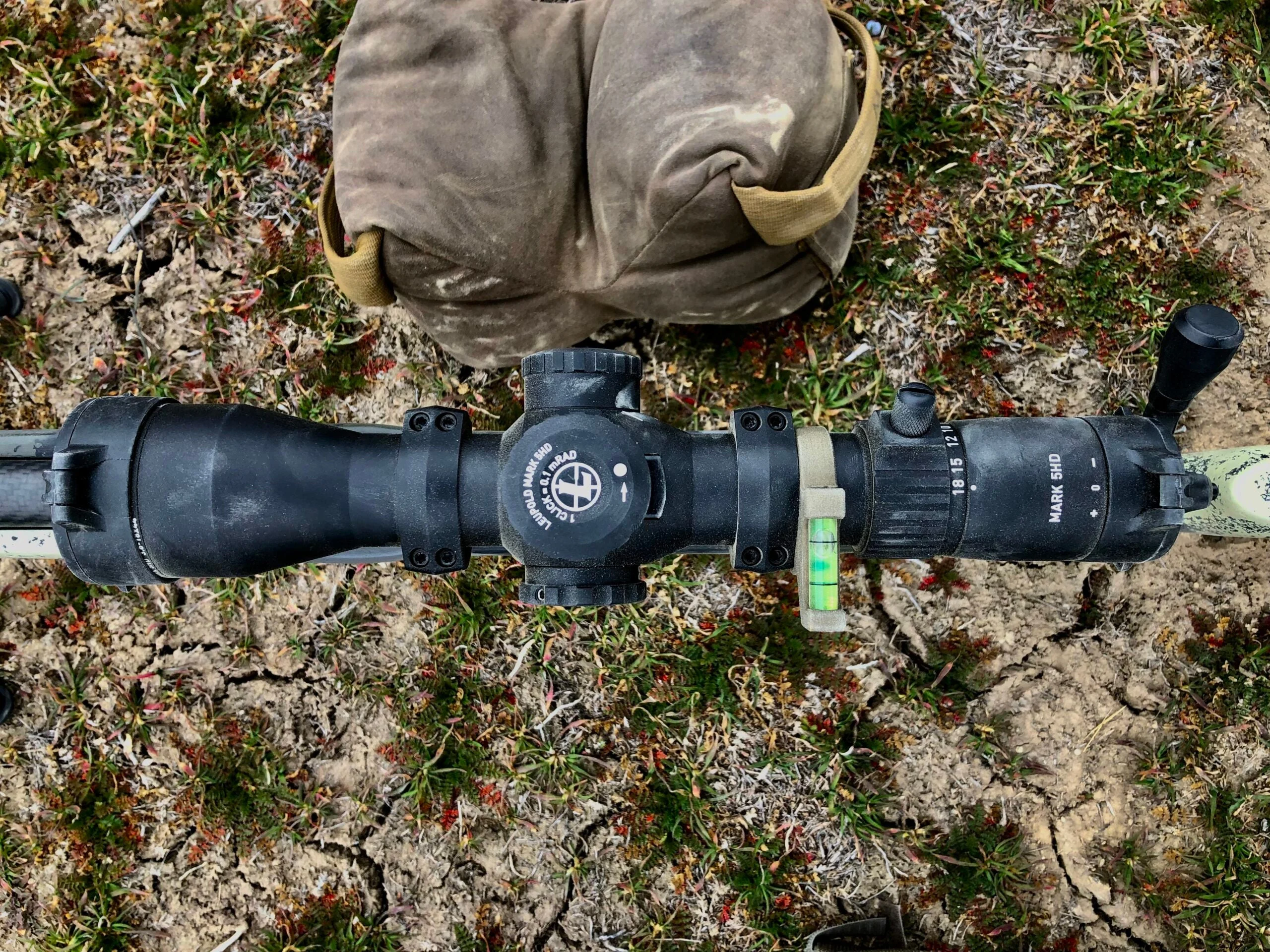
This Leupold Mark 5 HD is set up with an MRAD reticle and turrets. Matthew Every
The relationship of 1,000 to 1 is constant when measuring in milliradians. If you’re looking at a 1-meter high target through a scope at 1,000 meters, it will measure 1 milliradian in your reticle. If you’re looking at a 1-inch target at 1,000 inches, it will also be 1 milliradian, and so on. These equations can be used to measure the range to a target if you know the size of your target. To do this, you take the known size of the object you’re shooting at, multiply it by 1,000, and divide that by how many milliradians the object measures in your scope. Just keep in mind that whatever unit of measurement you use for the size of your target will be the same unit of measure you use for the distance to the target.
MRAD scopes are typically broken up into .1 milliradians. That gives you 10 clicks on a scope turret between each milliradian. Shooters often refer to adjustments on an MRAD scope in MILS, as in “come up one MIL,” or “you’re off to the left by .5 MILS.”
What is MOA?
.embed-container { position: relative; padding-bottom: 56.25%; height: 0; overflow: hidden; max-width: 100%; } .embed-container iframe, .embed-container object, .embed-container embed { position: absolute; top: 0; left: 0; width: 100%; height: 100%; }
See https://www.youtube.com/embed/VA2PZBD5Tjgon YouTube
In MOA or “minute of angle,” a “minute” is another way of saying 1/60th. As with MRAD, we’ll use a circle to illustrate this. A circle can be broken up into 360 degrees. One MOA is the angle between 1/60th of one degree. This translates to roughly 1 inch at 100 yards. To visualize this, picture two laser pointers angled apart at 1 MOA. At 100 yards, the distance between the dots would equal exactly 1.047 inches, or roughly 1 inch. At 200 yards they would be 2.094 inches apart, or roughly 2 inches, and so on.
This is great for measuring the sizes of targets and compensating for shots at most hunting distances, but when you get out to 1,000 yards, things start to get a little wonky—1 MOA at 1,000 yards equals 10.5 inches. But that doesn’t make MOA a bad unit of measure. It can be pretty handy when you’re correcting for shots that miss your target. If you know the distance to your target and how far off you are on your shot, you can make a quick correction. For example, if you’re shooting a target at 400 yards and miss it by 8 inches, you can adjust your scope 2 MOA and hit your target.
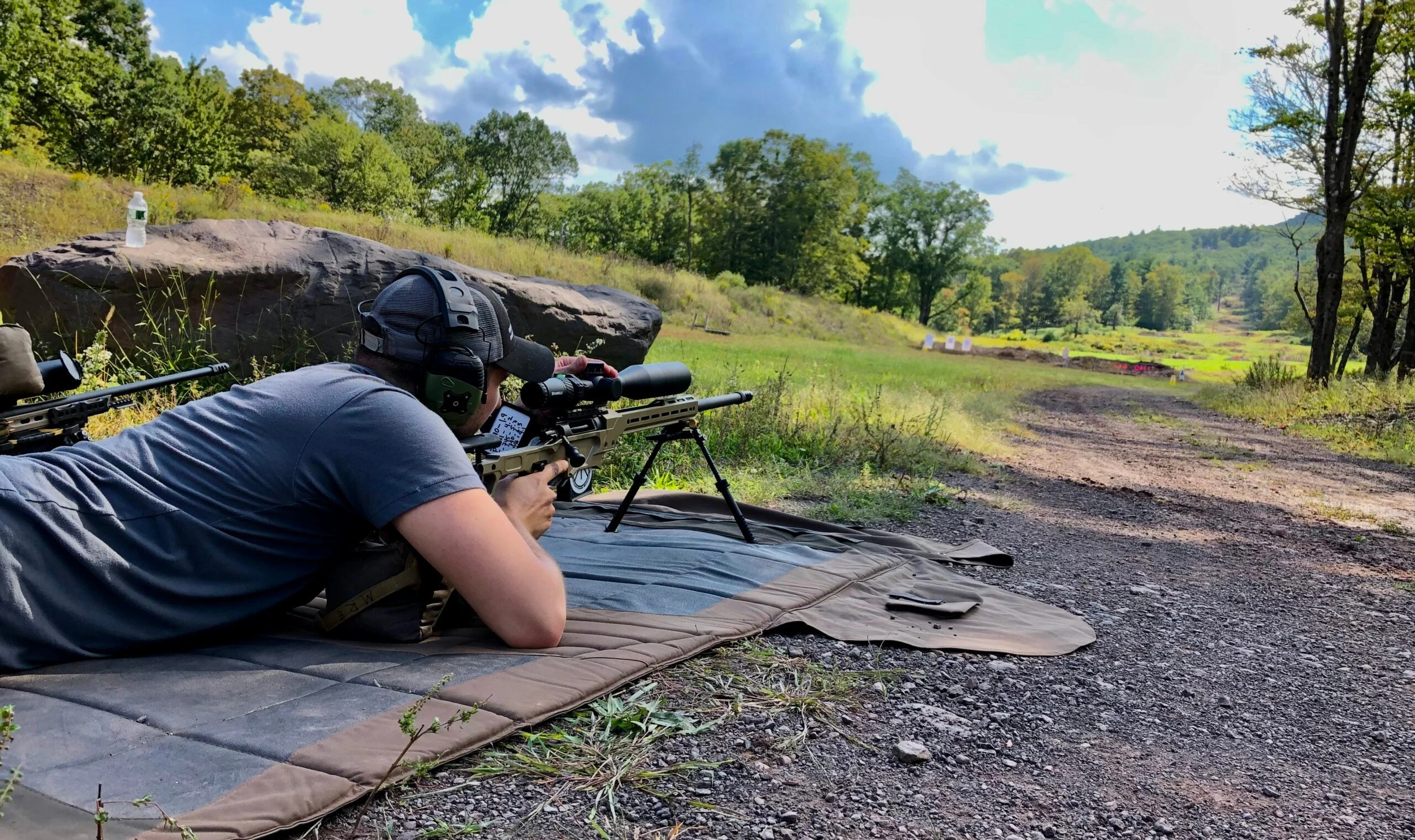
The author adjusts the turrets of his scope during a PRS match. Matthew Every
Most riflescopes in the U.S. are formatted in MOA. MOA scopes are usually broken up into ¼ MOA divisions. On a turret, that gives you four clicks between each minute of angle. Rifle manufacturers will also use MOA to describe a rifle’s level of precision. For example, a Springfield Model 2020 is guaranteed to shoot .75 MOA out of the box. This means it will group shots at roughly ¾ of an inch at 100 yards (depending on what kind of ammo it likes shooting best).
MRAD vs. MOA: What’s Best For You?
With laser rangefinders and ballistic calculators, you can almost forget about all of the technical stuff above. All you need to do is mark the range and make sure your calculator’s unit of measure matches your scope. Whether you make this calculation in MOA or MRAD is largely based on what scope you bought or the unit of measure that you’re using. As said before, though, it’s important to have a reticle that matches your turrets, otherwise, you’ll need to calculate the difference between MRAD vs MOA for every shot.
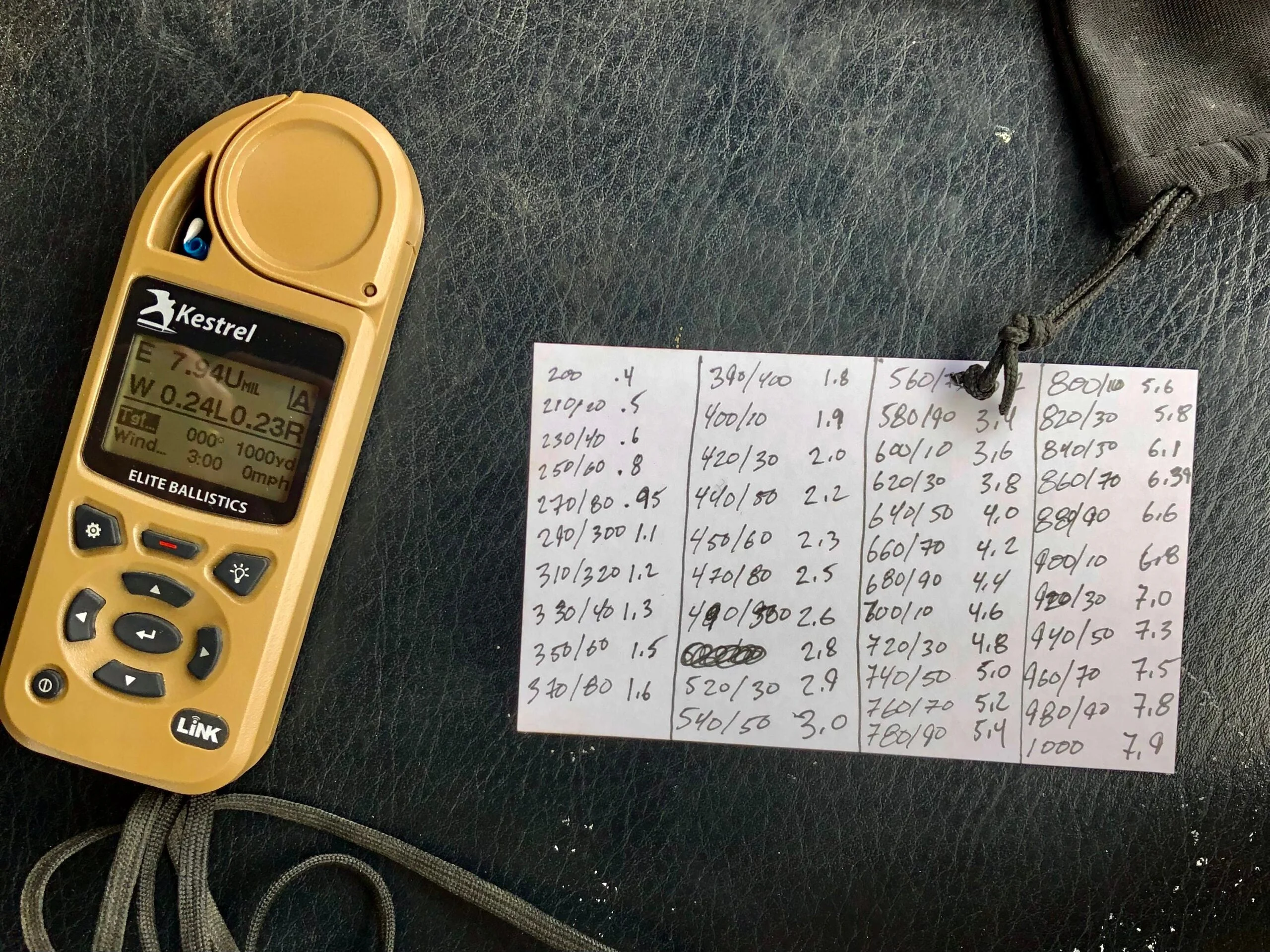
Many competition shooters find MRAD data easier to memorize and keep track of during a match. Matthew Every
For measuring targets and estimating range with only your reticle, MRAD really works well. Its 1 to 1,000 scale is easier to work with on the fly and easier to remember. If the average whitetail buck stand roughly 1 yard at the shoulder and he measures 4 mils high in your scope, all you need to do is divide 1,000 by 4 to know that he’s standing at about 250 yards. You could do the same math with an MOA reticle, but you might have to break out a calculator because your constant isn’t a round number like 1,000. Most hunters using rangefinders, though, don’t need to worry about this.
Read Next: Best Long-Range Rifles of 2023, Tested and Reviewed
A lot of competition shooters find MRAD elevation holdovers easier to memorize. For example, for a 140-grain 6.5 Creedmoor, the elevation correction is around 9.8 mils at 1,000 meters versus 33.5 MOA. This comes in handy when shooting stages that have multiple targets at multiple distances. Technically, adjustments are finer per click on an MOA scope, but few shooters would be able to tell the difference in the field. Still, MRAD vs MOA is all a matter of personal preference. Whichever you choose, you should try to stick with it and become as proficient as possible.

